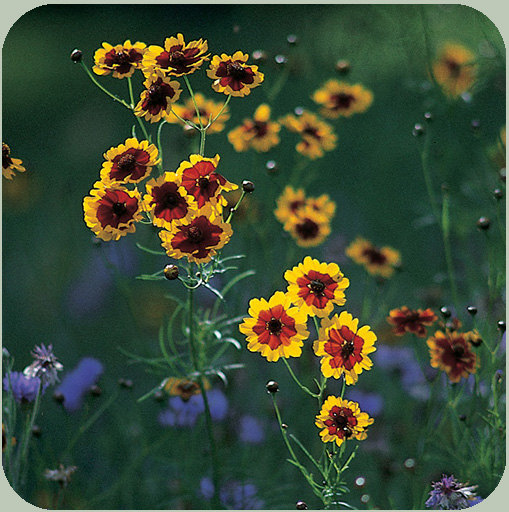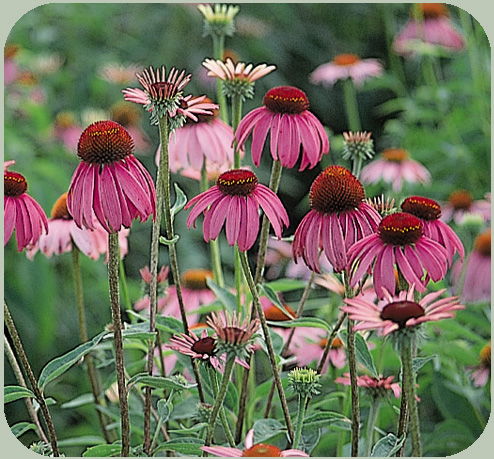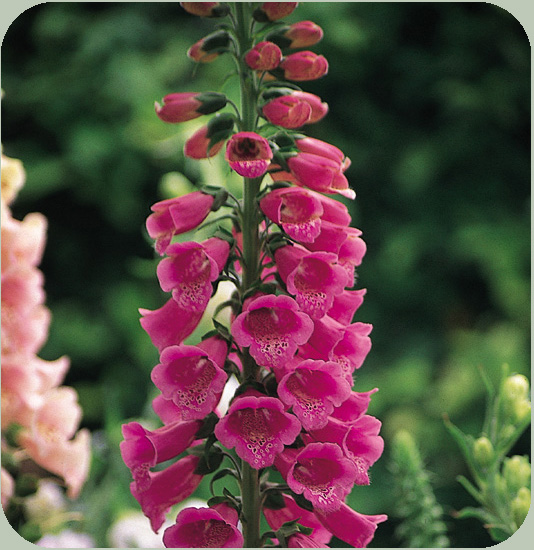
Annual, Perennial, Biennial?
Annuals - Plants that perform their entire life cycle from seed to flower Annual Plains Coreopsis |
Perennials - Plants that persist for many growing seasons. Generally the top portion of the plant dies back each winter and regrows the following spring
 Perennial Purple Coneflower |
Biennials - Plants which require two years to complete their life cycle.
 Biennial Foxglove |
Annual/Perennial - A plant can behave as an annual or a perennial depending on local climatic and geographic growing conditions. In the southern portion of the United States, these plants tend to grow much quicker than in the north due to the warmer weather and extended growing season. For example: a Black-Eyed Susan would behave as an annual if grown in Louisiana; whereas, if grown in Ohio, a Black-Eyed Susan would behave as a perennial.
Index | Photos | Growing Info | Seed Sources | Web Links | Mixes | Zone Map